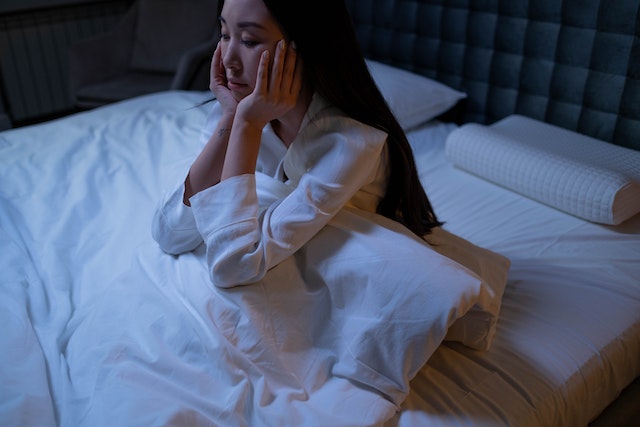Image from Pexels
You are not alone if you struggle with getting a good night of sleep each night. There are a variety of factors that can influence how well you sleep, meaning that some of these are under your control. Here are five of the best tips to help you to banish those sleepless nights forever.
Stick to a Schedule
While it may seem too simplistic, sticking with a regular schedule can do wonders for your overall sleep patterns. It is often difficult to stay on a schedule if you are dealing with young children or erratic work schedules. However, you can greatly improve your ability to fall asleep if you are going to bed at roughly the same time each night. It is also important to resist the urge to sleep too late on the weekends as this will disrupt your normal circadian rhythm function.
Unfortunately, this also means limiting naps during the day. If you insist on taking a nap, try to limit it to 20 minutes or less. Lastly, if you find yourself not being able to fall asleep, it is a good practice to get out of bed and try walking around for a few minutes rather than just lying there for hours.
Lean on Technology
It is easier than ever to get the ideal amount of sleep when you lean on today’s modern technology solutions. A sleep enhancement system from SOLTEC HEALTH combines the information derived from a sleep tracking system with the ability to send out the right frequencies to boost the body’s sleep cycles.
You can also now purchase a smart mattress, designed to maximize your comfort every time you crawl into bed. Or try using a pair of noise-canceling headphones to encourage better sleep. With so many high-tech options available to support better sleep, it is easy to find the right gadgets for your specific needs.
Create a Quality Sleeping Environment
You will raise the odds that you sleep more soundly if you have made the effort to create a comfortable sleeping environment. The cornerstone of a good sleeping area is a comfortable bed. Your sleeping environment should also be free of extraneous noise or excessive light. You may find the use of a white machine or room-darkening shades helpful in this endeavor.
Keeping the room at the ideal temperature for your preferences is also essential. Most people find that they sleep better in a cooler room. You can play around with a few different temperature settings to find the ideal reading for your sleep needs.
Limit Blue Light Exposure in Hours Before Bed
It is no surprise to learn that many people have a difficult time falling asleep after spending time staring at a screen prior to bedtime. The blue light that typically comes from electronic devices such as tablets, televisions, and smartphones is a detriment to your sleep patterns. This is because this type of light sends the signal to your brain that it should be entering an awake cycle, disrupting the body’s circadian rhythm.
Limiting your exposure to these devices in the two hours prior to bed is the best strategy. It is also important to resist the temptation to reach for your phone if you wake up in the middle of the night.
Practice Calming Strategies
For many insomniacs, the most challenging part of falling asleep is calming the mind so that it is able to drift off. Being purposeful about relaxing your mind in the hours before bed will inevitably put you in a better position to fall asleep and stay that way.
Good ideas include practicing yoga or meditation before trying to fall asleep. You can also try taking a relaxing bath or drinking a warm decaffeinated drink. The goal is to do an activity that sends the signal to your mind that it is time to relax and release the worries of the day. You may need to experiment with a few different calming strategies to find your best fit.
Conclusion
By following these tips, you can take control of your sleep schedule. You will be more likely to wake up ready to take on the day with vigor if you are intentional about supporting your sleep each night.

